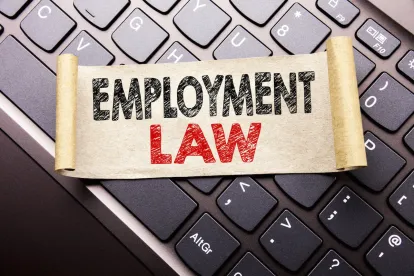On March 16, 2020, new rules on joint employment status under the Fair Labor Standards Act (FLSA) will go into effect. The new rules should provide clarity and relief for employers struggling to determine whether they would be treated as joint employers by the DOL.
The DOL’s final rule, first published on Jan. 16, 2020, announces a four-factor balancing test for determining joint-employer status when one employer “suffers, permits, or otherwise employs the employee to work, but another individual or entity simultaneously benefits from that work.” The test calls for consideration of whether the alleged joint employer has the power to:
-
hire or fire the employee;
-
supervise and control the employee’s work schedules or conditions of employment;
-
determine the employee’s rate and method of payment; and
-
maintain the employee’s employment records.
Other factors may be relevant, “but only if they indicate whether the potential joint employer is exercising significant control over the terms and conditions of the employee’s work,” according to the DOL. The appropriate weight given to each factor varies depending on the circumstances, and no single factor is determinative of joint-employer status.
The final rule contains other important points:
-
Simply reserving the right to control working conditions is not enough to find one employer the joint employer of another. An alleged joint employer must actually exercise control over the employee’s working conditions.
-
A potential joint employer’s contractual agreements with an employer requiring the employer to comply with its legal obligations or to meet certain standards to protect the health or safety of its employees or the public do not make FLSA joint-employer status more or less likely. Similarly, contractual agreements with an employer requiring quality control standards to ensure consistent quality of work product, brand, or business reputation do not make FLSA joint-employer status more or less likely.
-
Other factors given by the DOL that do not make joint-employer status more or less likely include providing a sample employee handbook, or other forms; allowing the employer to operate a business on its premises, including “store within a store” arrangements; or offering an association health or retirement plan. See Joint Employer Final Rule FAQs.
The final rule also identifies additional factors that may be relevant in determining joint-employer status as well as those not be considered when using the balancing test. Notably, an employee’s economic dependence on an employer is not determinative of whether the entity is a joint employer. In addition, just because an employer is a franchisee does not make it more or less likely that the franchisor will be considered a joint employer.
The final rule provides much needed guidance. The DOL has not formally revised the joint-employer standard in over 60 years. While time does not necessarily heal everything, the final rule should come as relief to many employers.



 />i
/>i
